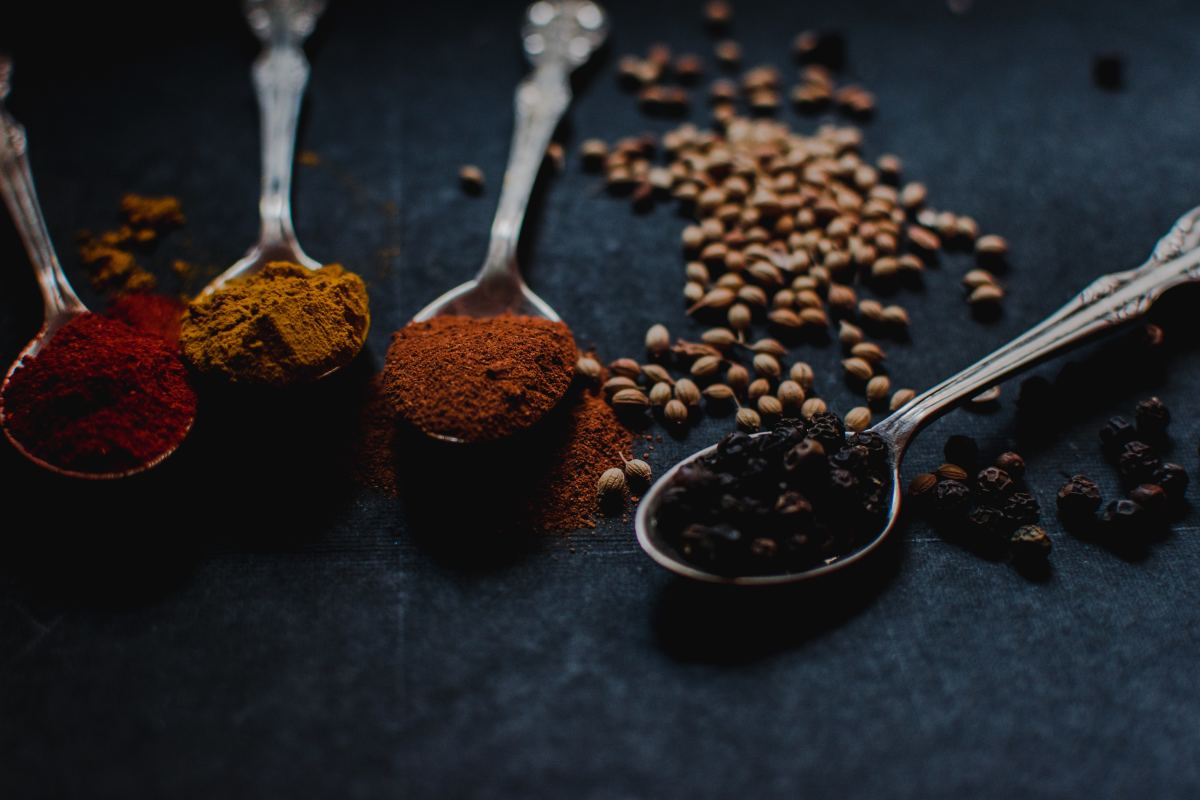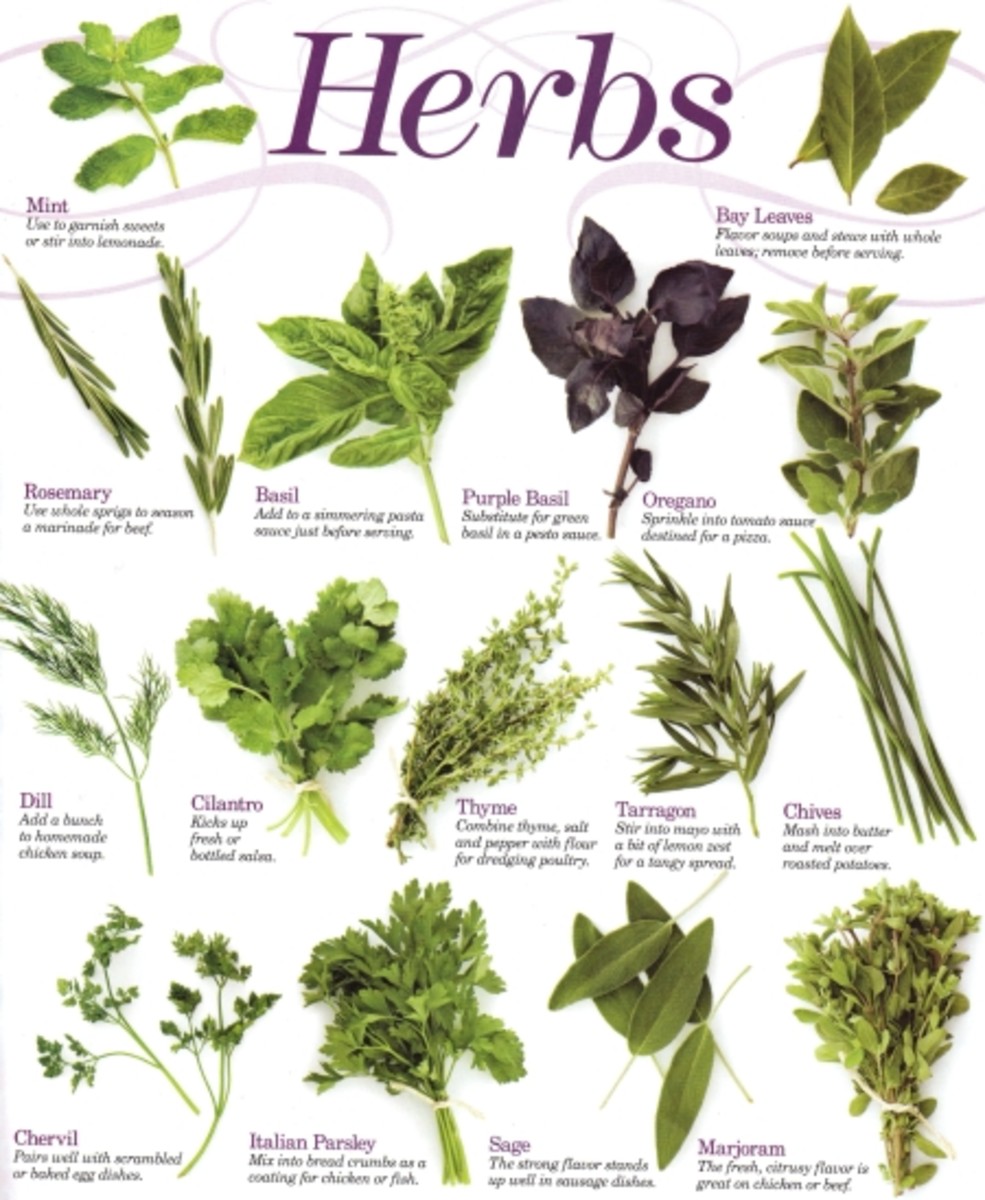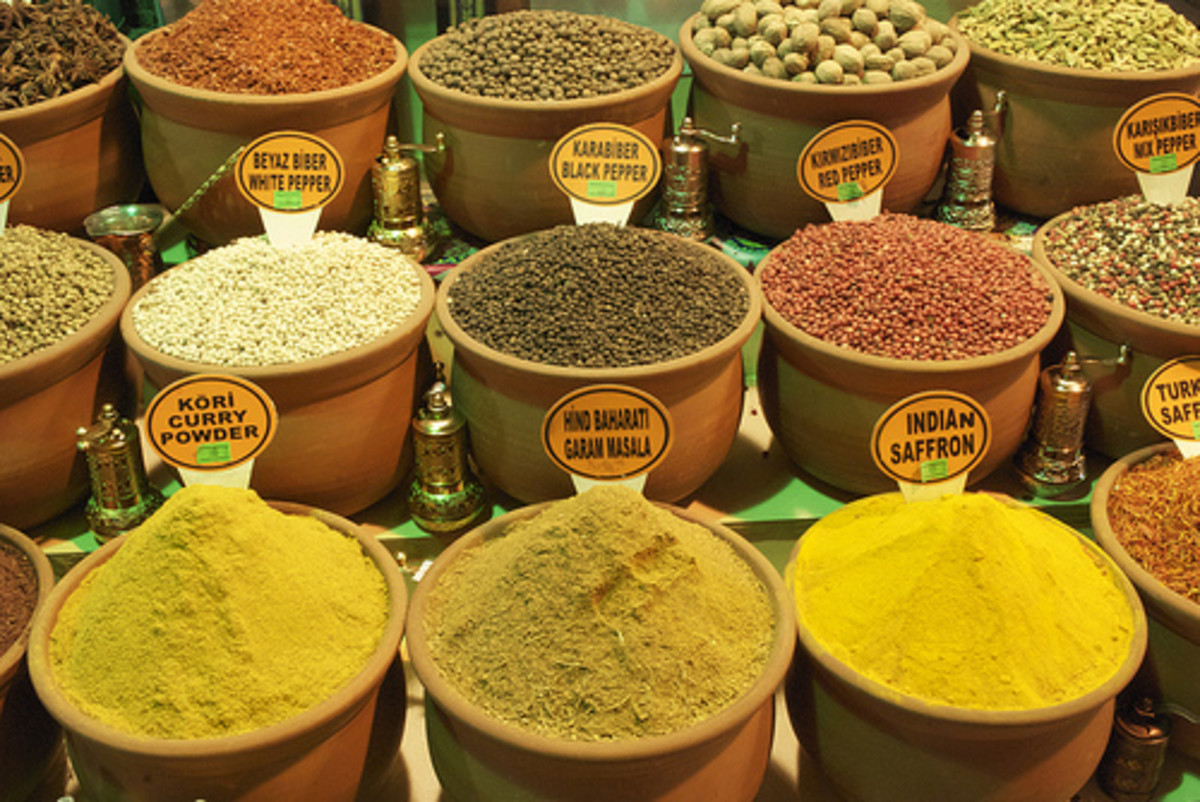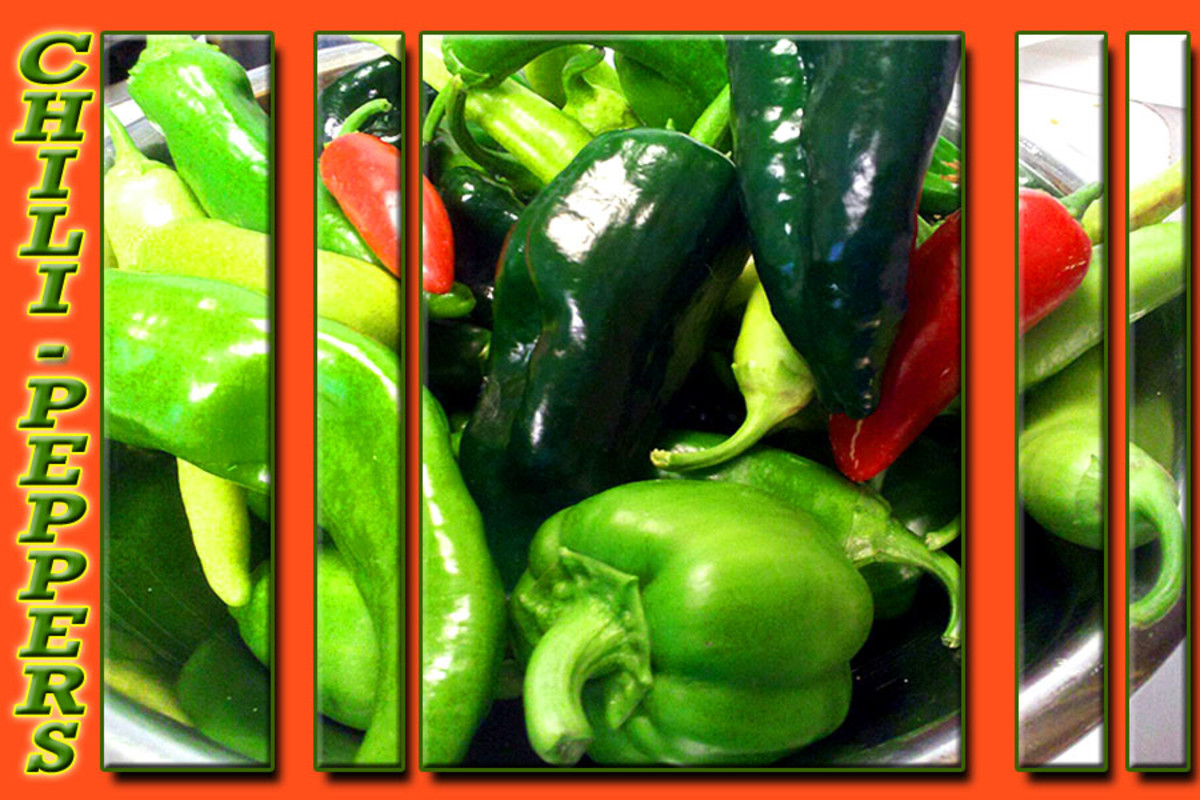Maximize Flavor in Spices and Herbs: Tips and Tricks for Buying, Cooking and Storing
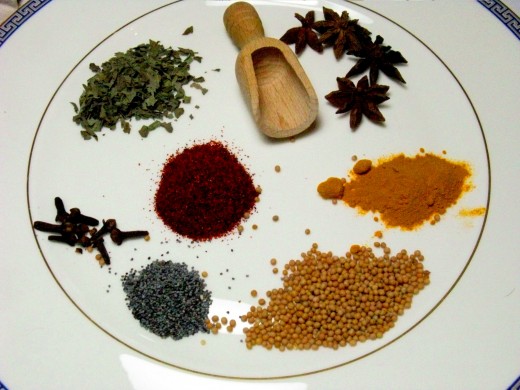
While I was a short-order cook, I used sight and smell alone to identify my home stock of roughly 40 spices and herbs. I bought spices in bulk from a food cooperative and packaged them in plastic bags not labeled glass jars. Herbs were trickier -- I always had trouble with marjoram, thyme and tarragon, but a whiff of oregano is unmistakable. The spices had more distinctive qualities: the intense orange/yellow of turmeric and fiery red of paprika stood out; mustard, caraway and many seeds I kept in their original seed forms where their size and shape betrayed their identity; and I’d be surprised if anyone didn’t recognize cinnamon, especially if they had ever been in a shopping mall with a Cinnabon.
What Are Spices and Herbs?
We often don’t know much of flavorings and spices. The origin of many spices is exotic. Cloves and vanilla are in most cupboards, but likely traveled from Madagascar to get there. Those woody cloves are flower buds. Vanilla comes from long, greasy-looking black beans. My working definition of spices is the ground or whole seeds, bark or roots of plants used in cooking and baking. I describe herbs as the leaves and stems of plants used in cooking and baking. I make a distinction between spices and herbs and mixes or blends of spices and herbs, e.g. taco seasonings, Thai spices, Chinese five-spice powder, Cajun spices, and Italian seasonings. I’ve provided some recipes below for these common mixes.
Understanding Potency in Spices and Herbs
The flavor of most herbs and spices is locked in their oils which degrade rapidly once exposed to the air. Wait until you need spices and herbs before you crush, bruise or grind to incorporate in foods to maximize their essence. How spices and herbs release flavor is a tricky business that defies simple rules. The spices themselves may have enormous variability in potency. The manner you use them also impacts their potency. Ground spices, such as cayenne, paprika, cumin, cardamom, mustard or nutmeg suffer loss of strength with time in your kitchen. Within a year, nutmeg and cardamom will lose most of their flavor and the heat of cayenne will decrease significantly. Grinding fresh spices every time you cook is a tall order, but If you purchase cardamom pods and cumin and mustard seeds, use a pestle and mortar to occasionally restock your ground supply. Use a grater or microplane with whole nutmeg.
A few years ago I learned a trick with mustard. Take a glass of ice water and add a teaspoon of ground mustard (ground seeds, not Grey Poupon). Now, in a separate glass filled with boiling hot water add a teaspoon of ground mustard. Let both reach room temperature and taste. If you want to be surprised stop reading now and try the trick. If you decided to let me spoil it, what happens is this: The ice water solution produces spicier (hot) mustard than the hot water solution. If you used yellow seeds neither will be too strong. Darker seeds will make stronger mustard. The point is, the same product in the same quantity can produce different results with only slightly different preparation. How do you deal with these strange variables? Experience helps, but the best answer is taste your food and correct as needed.
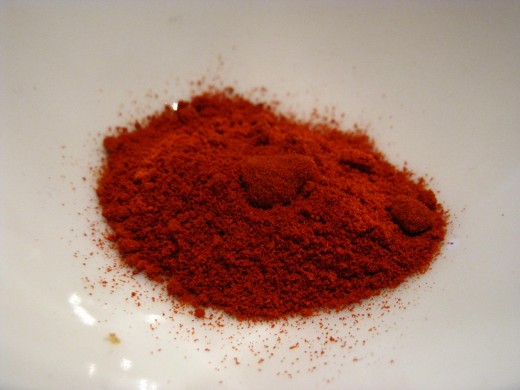
Storage and Handling
When storing and handling your herbs and spices follow these simple guidelines:
- Use airtight containers. Moisture may cause caking, mold or loss of potency
- Don’t shake a full spice jar over a boiling pot. The steam can introduce moisture to your container.
- Use clean, dry utensils for spooning and scooping out seasonings.
- Aroma: Does it pass the sniff test? If you can’t smell it, will it still add flavor?
- Color: Paprika should be an intense red (not brown), are green herbs green or grey?
- Kitchens are bright, often hot and humid places. Store your spices in an unkitchen-like part of your kitchen with little temperature variation and little or no direct sunlight to extend their life and protect their potency.
- Refrigerate hot peppers and cayenne to extend their life.
Where to Buy Spices: Online Spices, in Bulk, Conventional and Ethnic Groceries
Most spice companies, e.g. Penzeys, McCormick, Spice Island, and dozens of smaller companies market online spices and herbs. Penzeys and Spice Islands have their own retail stores in addition to selling through other retailers. Amazon also markets online spices. When shipping is included the savings may be negligible, but Americans might find it difficult to find some ingredients many in the Near East or Asia take for granted, e.g. asafetida, sumac, seaweed or bonito flakes. Online spices are also available in large quantities versus purchasing several expensive containers in a regular grocery.
As mentioned earlier, I used to buy most of my spices & herbs in bulk from food cooperatives. I rarely paid more than a dollar for a few ounces of most spices. For those just setting up a kitchen, the savings can be tremendous – the nicely packaged and labeled glass jars found in conventional groceries typically cost three or four dollars. I’ve also had good luck in ethnic groceries. Not only could I find more unusual ingredients, I didn’t have to pay a premium because of that exotic perception – almost everything in the Asian grocery was imported.
Spice Mixes and Blends: Cajun Spices, Thai Spices and More
Spice mixes and blends account for much of the growth in the spice section of most grocery stores. Price competition for individual seasonings is stiff, but this value-added avenue affords spice companies a chance for larger margins. Packets of taco seasonings, Cajun spices, and Thai Spices or curry pastes are often two or three times the cost per ounce of their components. I've included recipes for these, plus the standard Italian Seasoning and Chinese five-spice mixes. If you know the basic ingredients of these blends, you can save yourself a few dollars and customize the mix to your own tastes.
Cajun Spices
I’m not a Cajun, but I do enjoy blackened catfish and adding spice rubs like this to pork chops. My survey of Cajun spices revealed that most recipes (mine included) are based on a core of black and white pepper, onion powder, garlic powder, paprika and cayenne with loads of salt. My version is below:
Cajun Spice Ingredients
- 1/2 Cup of Salt
- 2 Tablespoons of black pepper
- 2 Tablespoons of white pepper
- 2 Tablespoons of paprika
- 2 Tablespoons of onion powder
- 2 Tablespoons of garlic powder
- 2 Tablespoons of chili powder
- 1 Tablespoon of dried sweet basil
- 1 Tablespoon thyme
- 1 Tablespoon of cayenne pepper
Mix all ingredients in a medium bowl and rub onto poultry, pork or beef at least two hours before cooking.
Thai Spices
When I use the term "Thai spices" I am referring to curry paste. Rather than play word tag, I've included what is a representative of Thai spices. The number of ingredients may be initially intimidating, but the preparation isn't elaborate: basically it all goes into a food processor. You will want to add coconut milk when you cook with these, but I've deliberately left it out of this recipe. If you don't use all of your batch at once, the coconut cream will separate in the refrigerator. For the entire batch you should add four Tablespoons of coconut milk.
Thai Green Curry (yield: 1 - 1/2 Cup)
- 3 Thai green chilis or jalapenos sliced (for milder paste, remove seeds and whites)
- 2 Tablespoons chopped red onion or shallots
- 3 Minced garlic cloves
- 1 or 2 Stalks lemongrass, clean and peel and use the bottom two inches (available in most Asian markets)
- 1 Half-inch cube of ginger, grated
- 1/4 Cup chopped cilantro leaves
- 1/4 Cup chopped basil
- 2 teaspoons kaffir or lime zest
- 2 teaspoons ground cumin
- 2 teaspoons ground coriander
- 2 teaspoons shrimp paste (available in most Asian markets)
- 1 Tablespoon fish sauce (optional)
Italian Seasonings & Chinese Five-Spice
These two simple mixes are incredibly useful standards. Italian-American recipes often refer to "Italian Seasonings" as if it is one universally recognized ingredient, but there is no standard. Most mixes contain basil, oregano, rosemary, thyme and marjoram in equal parts. Many also include pepper or pepper flakes, onion and garlic powder. Apply a dash of this almost anywhere to liven up pasta sauces, garlic bread or season chicken or fish.
Italian Seasonings
- 2 Tablespoons basil
- 2 Tablespoons oregano
- 2 Tablespoons marjoram
- 2 Tablespoons thyme
- 2 Tablespoons rosemary
- 1 Tablespoon red pepper flakes
Chinese Five-Spice
If you haven't used Chinese five-spice powder, you've almost certainly and tasted it and will recognize it immediately. Unlike most mixes and blends, there is little variation in recipes for Chinese five-spice. The ingredients are Szechuan peppercorns, cloves, fennel seeds, star anise and cinnamon. These woody ingredients demand a tough pepper mill, grinder and or food processor to produce a fine powder. Include it in a pork loin or chicken wing marinade or mix directly with noodle dishes.
- 2 teaspoons of Szechuan peppercorns
- 2 teaspoons (6 - 8 sections) of star anise
- 2 teaspoons ground clove
- 2 teaspoons fennel seeds ground
- 2 teaspoons ground cinnamon
Whether you purchase online spices, at a food cooperative, a conventional grocery or grow your own in a window box, spices and herbs are one of the least expensive ways to make food interesting. Once you learn to use them well, you've acquired the most valuable skill in the kitchen -- making food taste good.
Other Hubs by Brupie
- Picking a Food Thermometer: Bimetallic, Thermistor, Thermocouple, and Infrared
- P.F. Chang's Frozen Meals: A Stroll down the Frozen Food Aisle
- The Dorm Gourmet: Ten Tips beyond Microwave Cooking Basics
- The Dorm Gourmet: 3 Quick and Easy Breakfasts for College Students on the Go
- The Dorm Gourmet: Mongolian Beef for Two Recipe
- The Dorm Gourmet: Simple Spaghetti Carbonara in a Rice Cooker




